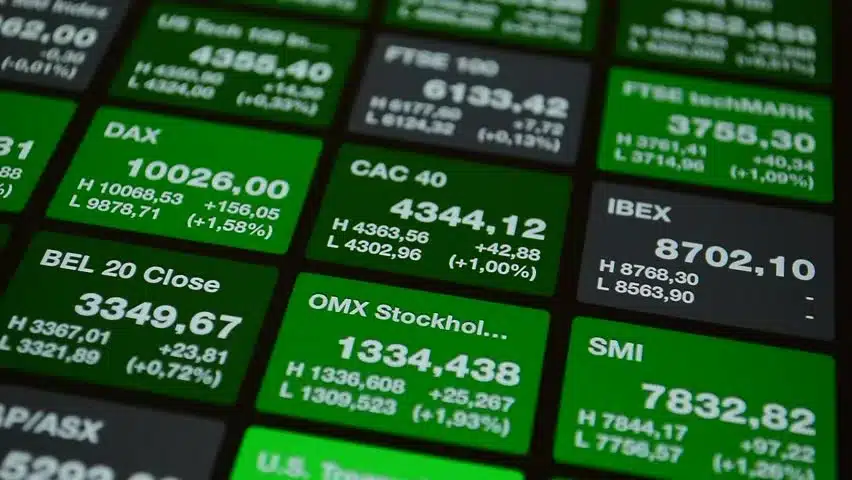How are stock market indices like the ASX 200 determined?
![]() Nick Sundich, April 30, 2024
Nick Sundich, April 30, 2024
Stock market indices like the ASX 200 and S&P 500 are used as barometers for the performance and overall health of the entire market. When you hear the term ‘green day’, it will be because market indices around the world are in positive territory. The same applies to a ‘red day’ when the markets are down.
In this article, we look at how indices are determined – in other words, how companies make it into an index and how they are removed.

How are stock market indices determined?
Stock market indices are determined by the performance of a particular group of stocks and their weighted average. When calculating stock market indices, the performance of each stock in the index is taken into consideration. This includes metrics such as price and market capitalisation. The prices and other metrics are compared to the starting value of the stocks in the index, which is usually set to 100.
If a particular stock goes up in value then its contribution to the index will increase proportionally. On the other hand, if a stock goes down in value it will also detract from the index’s total value. The makeup of an index is also an important factor when determining its value. Different indexes contain different stocks and some may only include certain industries or regions while others may be more diversified.
They’re not set in stone
The components can change over time due to mergers or acquisitions and some companies may even be removed from an index if they no longer meet certain criteria like size or profitability.
In addition to taking into account each constituent’s performance, many indices also use calculation techniques such as equal-weighting, float-adjustment or capitalization-weighted methodology for assigning weights to individual stocks within an index. This helps reduce volatility by making sure that large companies do not have too much influence on the direction of an index’s overall performance.
Additionally, adjustments may be made periodically based on market conditions in order to ensure that an index better reflects current economic conditions.
Real-life examples of stock market indices
Let’s look at 2 real-life examples. First the S&P 500. The stocks included in this indice are determined by a number of criteria, including size, liquidity, industry sector representation and financial viability. Each company must meet strict criteria related to their market capitalization, liquidity and public float. These include needing to be a US company, have a market cap of at least US$8.2bn, at least ~50% of its shares floated on either the NYSE or Nasdaq, have traded at least 250,000 daily shares in the six months prior to inclusions and positive earnings over the latest quarter and prior fiscal year.
Stocks are added or removed from the S&P 500 on a quarterly basis. Additionally, any stock can be included or excluded from an S&P 500 sector index if it does not meet certain criteria, such as market capitalization or liquidity requirements. All changes to the index are reviewed and approved by a committee of experts at Standard & Poor’s who are responsible for making sure that each security meets all applicable standards.
Now let’s look at the ASX 200. It has its own criteria too for liquidity, market capitalisation and minimum public float. The ASX 200 is rebalanced quarterly – specifically on the third Friday of March, June, September and December. Roughly a week’s notice is given prior to the changes. The All Ords is only rebalanced once a year – in March.
Is it a good thing if my stock is added to an indice?
It could be, because this may trigger mandatory institutional buying of the stock. However, there will inevitably be more scrutiny on the company. Additionally, more liquidity and institutional buying also open up the possibility for large investors to short the stock as was so clearly illustrated with Weebit Nano when it entered the MSCI Australia and ASX 300 early in 2023.
What are the Best ASX Stocks to invest in right now?
Check our buy/sell tips
Blog Categories
Get Our Top 5 ASX Stocks for FY25
Recent Posts
The $3m super tax is coming! If you’re invested in equities, here is how it might impact you
It seems during the next 3 years, the $3m super tax will be officially a thing. Itwas blocked by the…
Northern Star Resources (ASX:NST): The $28bn gold miner that stands above them all
Northern Star Resources (ASX:NST) is by far the largest gold company on the ASX, capped at $28bn as of May…
6 ASX stocks you forgot were listed
Here are 6 ASX stocks you forgot were listed Brisbane Broncos (ASX:BBL) No it is not a mistake. This…



